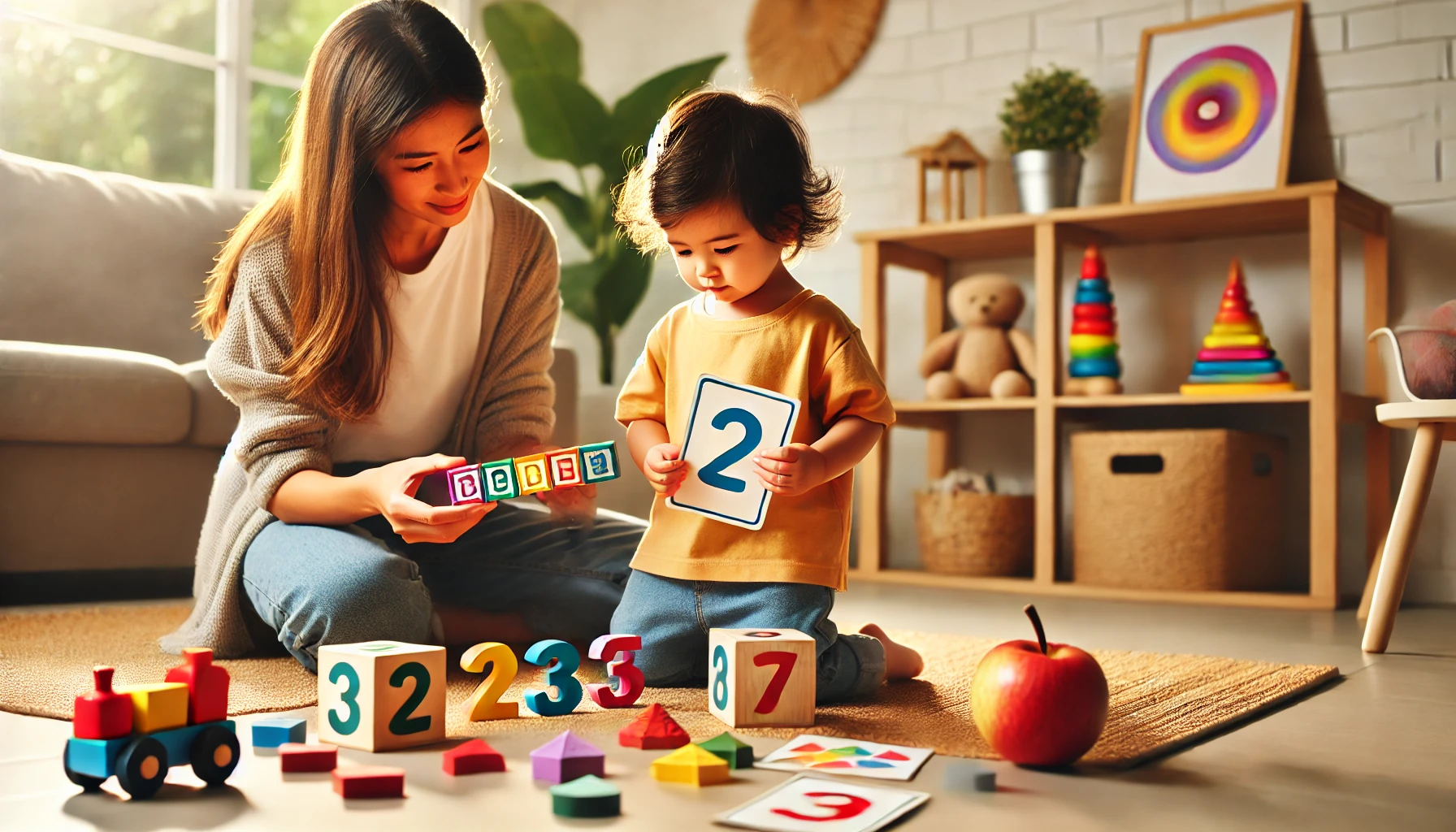How to Introduce Basic Math Concepts to Young Children at Home
Mathematics is a fundamental skill that supports problem-solving, logical thinking, and everyday life skills. Introducing basic math concepts at home through play and hands-on activities helps young children develop a strong foundation in numbers, counting, and spatial awareness. In this article, we’ll explore fun and engaging ways to make math a natural part of daily learning.
Why Early Math Skills Matter
- Builds problem-solving abilities – Helps children analyze and find solutions to everyday problems.
- Enhances logical thinking – Develops reasoning skills essential for future learning.
- Improves number recognition – Strengthens counting and early arithmetic skills.
- Encourages curiosity and exploration – Allows children to see math in their environment.
- Prepares for school readiness – A strong foundation in math helps with academic success.
1. Make Counting a Daily Activity
Counting objects in everyday life helps children understand numbers and quantities.
Activity Idea:
- Count toys, blocks, or snacks together.
- Count steps while walking up the stairs.
- Use fingers to show numbers when singing counting songs.
What Kids Learn:
- Number recognition
- One-to-one correspondence
- Early math fluency
2. Use Hands-On Objects for Math Exploration
Using tangible items helps children grasp basic math concepts.
Activity Idea:
- Arrange buttons, beads, or pasta in groups and count them.
- Sort objects by color, shape, or size.
- Use building blocks to introduce simple addition and subtraction.
What Kids Learn:
- Sorting and classifying
- Visualizing math concepts
- Basic addition and subtraction
3. Introduce Shapes Through Play
Learning about shapes builds spatial awareness and pattern recognition.
Activity Idea:
- Go on a “shape hunt” around the house.
- Use cut-out paper shapes to create pictures.
- Build structures using shape blocks.
What Kids Learn:
- Shape recognition
- Spatial reasoning
- Geometry basics
4. Play Simple Math Games
Games make learning math fun and interactive.
Activity Idea:
- Play board games that involve counting spaces.
- Use dice to practice simple addition and subtraction.
- Try a number-matching memory game with flashcards.
What Kids Learn:
- Counting and numerical order
- Recognizing number patterns
- Logical thinking
5. Explore Measurement and Comparisons
Teaching measurement concepts helps children understand size, weight, and volume.
Activity Idea:
- Use measuring cups and spoons while cooking.
- Compare heights of family members or toys.
- Measure how far they can jump or toss a ball.
What Kids Learn:
- Understanding of size and length
- Basic measurement skills
- Comparing and estimating
6. Introduce Patterns and Sequences
Recognizing patterns builds the foundation for algebraic thinking.
Activity Idea:
- Create patterns with colored beads or blocks.
- Clap or tap rhythms for children to repeat.
- Arrange toys in repeating sequences and ask what comes next.
What Kids Learn:
- Pattern recognition
- Logical sequencing
- Predicting outcomes
7. Teach Basic Addition and Subtraction with Real-Life Scenarios
Using everyday situations makes math relatable.
Activity Idea:
- Ask, “If you have three apples and eat one, how many are left?”
- Use toy cars or dolls to show adding and taking away.
- Play a grocery store game where kids “buy” items and count change.
What Kids Learn:
- Practical problem-solving
- Basic arithmetic concepts
- Real-world math application
8. Use Songs and Rhymes to Reinforce Math Concepts
Music helps children remember numbers and sequences more easily.
Activity Idea:
- Sing “Five Little Monkeys” or “Ten in the Bed.”
- Use finger plays to show number changes.
- Create your own counting songs with familiar tunes.
What Kids Learn:
- Counting fluency
- Numerical sequencing
- Memory retention
Final Thoughts
Introducing basic math concepts at home can be simple and fun when integrated into daily routines. By using hands-on activities, games, and real-life experiences, parents can help children build confidence in math while making learning enjoyable.
